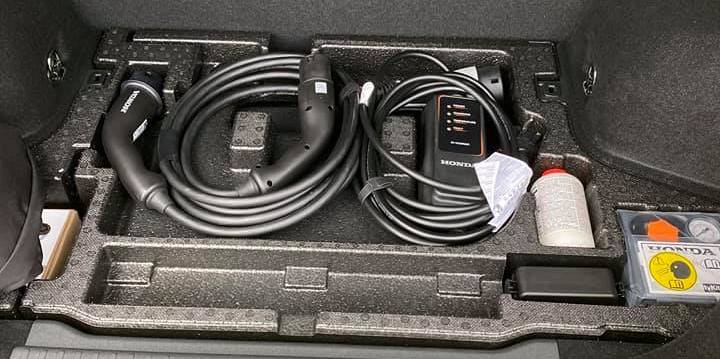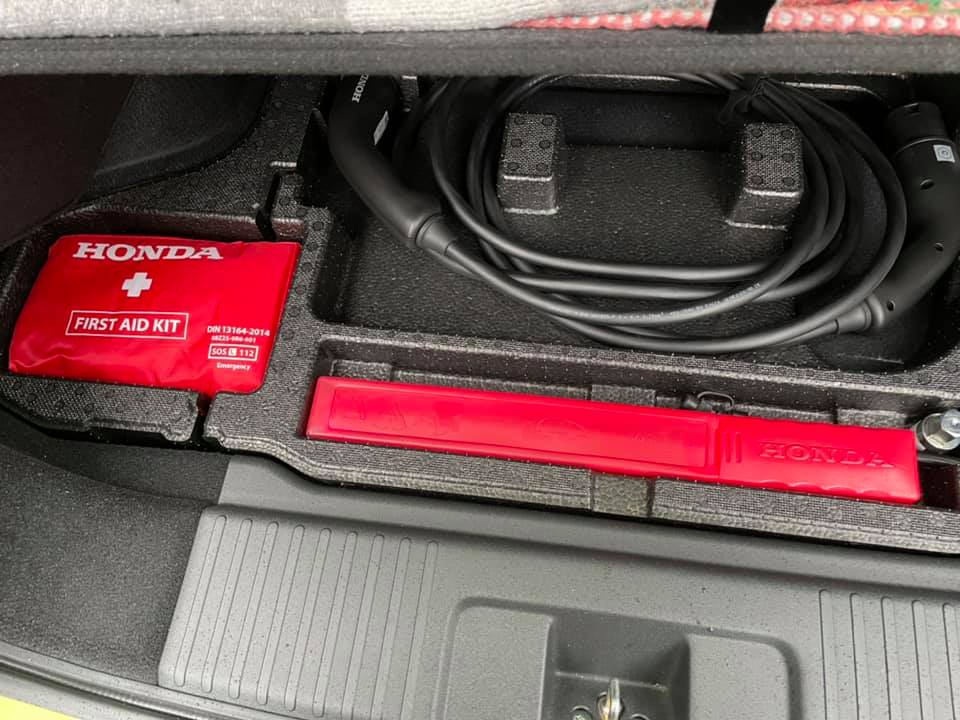Pop out the passenger-side door handle from the driver’s seat §
Press the “unlock” button on the inside of your door.
Press the “unlock” button on the inside of your door.
Make an image:
.bmp) or JPEG (.jpg).You can use a ready-made template to get the dimensions right:
Put the image at the root of a USB drive.
Connect the drive to the data-enabled front USB port (not the one with a battery icon).
Go to General Settings > Display > Wallpaper to import or switch wallpaper.
See this forum thread for inspiration and ready-made images.
Go to General Settings > System > Passenger App Launcher.
It can be changed to always be hidden, or to automatically show only if the passenger seat is occupied.
The aquarium app is not pre-installed on a new car and needs to be reinstalled if the infotainment system is reset.
Once installed, you’ll find it in “All Apps” and then “Aquarium”.
It used to be possible to download it via “Honda App Center”, but that is no longer the case. (Source.)
You can download the app file and (German) instructions via this forum post. Installation is via a USB stick.
Or ask your dealer to install it. (Source.)
When you use climate controls, the screen will show an overlay for a few seconds, which can get in the way of e.g. satnav.
To turn it off:
To switch the feedback display back on, repeat the steps above, except:
(Source.)
Open the car’s “Vehicle Settings” app, then choose “Meter setup”. Change “Warning message” to “ON”.
The “Range & Energy” screen on the dashboard (2020 manual, pp. 158–159) shows distance travelled and average energy consumption. The scroll wheel will switch between two trips called “A” and “B”.
The “Speed & Time” screen (2020 manual, pp. 160–161) shows elapsed time and average speed for trip A or B.
You can configure one of these trips to automatically reset every time you turn off the car. If you automatically reset say B but not A, you can see both your lifetime stats and those for your current trip.
Open the car’s “Vehicle Settings” app, then choose “Meter setup”. Change e.g. “Trip B reset timing” to “POWER OFF”. (2020 manual, p. 339.)
You need to use a supported app to see turn-by-turn directions on the display in front of the driver.
Either use the built-in navigation, or Apple Maps via CarPlay, or Google Maps via Android Auto.
Directions will show just in time as they become relevant. To show them permanently, switch to “Navigation” using the left selector wheel on the steering wheel.
(Source.)
The “⏻ AUDIO” button on the dashboard will effectively play/pause music. On wireless CarPlay, you will lose a few seconds when you un-pause.
To play/pause CarPlay from the steering wheel, you can select “Audio” and then scroll the wheel to some other input like Bluetooth and select it to pause. Scroll back to CarPlay to resume.
(Source.)
Open the car’s audio information screen, e.g. by tapping the current song name at the top of the screen while playing audio.
Use the Screen Switch icon to put it on the passenger screen if it’s not already there.
Now the passenger can skip songs from this screen while the driver uses their screen for e.g. navigation.
Normally you can’t play HDMI video while driving, but this can be enabled via a secret diagnostics menu – though it resets when the car is restarted.
Don’t watch video while driving! Only use this for the benefit of passengers.
This video shows how to do it. Also see the forum discussion.
See this video.
Also see the video comments mentioning a further step that might help with some devices.
The video comments suggest that the instructions don’t work for all Android devices.
You can press the Single Pedal Control button to turn off cruise control and re-activate Single Pedal Control at the same time (though you’ll get an angry beep).
To open, press the unlock button, release, then within 10 seconds press it again and hold it.
To close, press the lock button, release, then within 10 seconds press it again and hold it.
The windows move while you hold the button and stop when you release it. The back windows never open fully.
To turn it on, press the lock button (exterior lights will flash). Within 5 seconds, press and hold the climate button (fan icon) for a few seconds until exterior lights flash 6 times.
To turn it off, press and hold the climate button (fan icon). Exterior lights will flash.
Keep the driver’s seat belt fastened if you leave the car on when stopped.
If the seat belt is not fastened, after a while the car will show this dialog: “The vehicle automatically turns OFF to save battery power after a while. Do you want to cancel this function? Yes / No”.
Presumably this is about preserving the 12V battery which powers e.g. the infotainment system and the 12V socket used for the air compressor in the included tyre repair kit. There are horror stories about it going flat.
Fastening the driver’s seat belt makes the dialog go away. The assumption is that with the seat belt fastened, the car will charge the 12V battery.
You can even use a loose seat belt clip for convenience.
This may be more hassle than it’s worth, but it’s physically possible:

(Source.)
This first aid kid and this warning triangle (UK store) fit perfectly in the empty slots.
Or you can put the box of wheel nuts where the first aid kit would go (as in image above).
Or the wheel nut key on its own can fit next to the warning triangle (as in image below).

(Source.)
This seems to be the fewest steps:
Turning the car off appears to automatically apply the parking brake if “auto brake” or “single pedal control” were on – watch for the parking brake button’s indicator light to come on. If not, engage it manually. (Source.)
You can turn on “automatic parking brake” (2020 manual, pp. 501–502) in which case it should always engage when the car is turned off. Mind the manual’s warnings: the brake can freeze in cold weather and should not be engaged for conveyor-type car washes or towing. (Source.)
If it’s cold outside, precondition the car while plugged in. This preheats the battery, giving higher efficiency. It’s unclear whether this only happens at the “warmer” setting. (Source.)
Using the AC for heating or cooling uses a lot of energy. If you want to maximise range at the expense of comfort, turn it off. Consider using the heated seats and steering wheel – they require much less energy. (Source.)
You can also overheat or cool during charge stops and rely on residual heat/cold for a while.
The 16” wheels give slightly better range than 17”.
Leaving your car at the airport? Thankfully, charging losses when parked seem small.
There have been reports of losing 0% when parked for a week, and 3% when parked for 4 weeks. (Source. Source.)
Make sure to deactivate any preconditioning schedule since that will use up some charge.